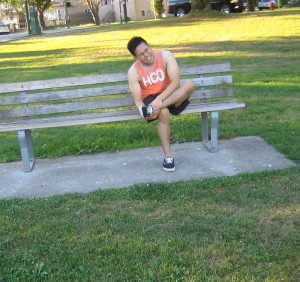Based on statistics, venous stasis ulcers affect thousands of individuals all over the world on a yearly basis. This type of ulcer typically occurs once the veins could not bring fluid and blood back to the heart. As a result, the fluid accumulates in the legs and ulcers develop due to the build-up of fluid beneath the skin.
The risk factors for getting a venous stasis ulcer is higher among individuals who have varicose veins, those who are overweight, those who have blood clots in the legs and injuries in the legs. It is important to note that the signs and symptoms of venous stasis ulcers can occur in one leg or both.
Development of ulcers
The crater-like, shallow venous ulcer is characterized by its irregular perimeter with a red-colored base. The wound is open with a pink, moist center or covered with a yellow fibrous tissue or dense black scab. The ulcer can also drain a large amount of fluid.

It is important to note that these ulcers are usually located on the interior part of the lower leg right above the ankle but can occur anywhere below the knee. It is best to consult a doctor if the ulcer shows signs of infection which includes swelling, pain, green or yellow discharge and a red area that spreads. By enrolling in a first aid class, you can learn how to handle infections. Always remember that venous stasis ulcers typically take up to four months to heal and some cases do not even heal after a year.
Changes in the skin
The skin surrounding the ulcer can look shiny, tight and swollen with a reddish-brown shade. The skin can also become itchy and thin. Take note that the reddish-brown shade develops due to the red blood cell pigments from the accumulated blood that stained the skin from within. The ideal way to minimize the swelling is to elevate the legs of the individual higher than the heart using pillows at least 3 times a day for 30 minutes and avoid prolonged walking or standing.
Pain and warmth
The skin surrounding the ulcer can also feel warm to the touch. The pain linked with a venous stasis ulcer tends to vary from one individual to another and can be described as an aching or burning sensation. Additionally, there is a feeling of fullness or heaviness in the legs.
Appearance of varicose veins
In most cases, varicose veins can also develop. Varicose veins are best described as bulging, twisted veins in blue or dark purple in color. An individual with varicose veins can experience heaviness, throbbing, burning and cramping along with the pain that worsens after extended periods of sitting or standing. If the individual has varicose veins, it can increase the risk for developing venous stasis ulcers.
